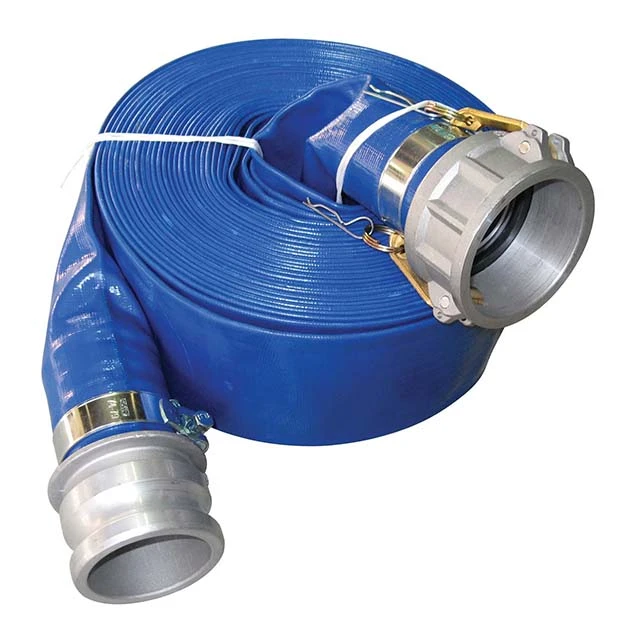lay flat hoses
Lay Flat Hoses A Comprehensive Overview
Lay flat hoses, also known as flat hoses or flat rubber hoses, have become increasingly popular in various industries, thanks to their incredible versatility, simplicity, and ease of use. These hoses are primarily designed to transport liquids, including water, wastewater, and various chemicals, making them critical components in many applications. This article delves into the characteristics, benefits, applications, and considerations of lay flat hoses.
Characteristics of Lay Flat Hoses
Lay flat hoses are typically made from a combination of PVC (polyvinyl chloride) or rubber materials. Their unique design allows them to lay flat when not in use, taking up minimal space, which is particularly advantageous for storage and transport. When filled with liquid, these hoses expand and become circular, enabling effective fluid flow. They come in various lengths and diameters, providing flexibility for different industrial needs.
One notable feature of lay flat hoses is their ability to withstand significant pressure. Many lay flat hoses are manufactured to handle pressures ranging from 60 psi to over 400 psi, depending on the application. Additionally, some lay flat hoses are reinforced with textile or polyester to enhance their durability and resistance to bursts.
Benefits of Lay Flat Hoses
One of the most significant advantages of lay flat hoses is their convenience. Given their lightweight and flexible nature, these hoses can be easily rolled up and transported. This portability makes them ideal for emergency situations where rapid deployment is necessary. Moreover, the reduced weight means that they can be handled by a single person, which is a significant benefit in many fields.
Another critical benefit is the low friction loss when transporting fluids. Because lay flat hoses are typically smooth on the inside, they minimize water turbulence, allowing for a more efficient flow compared to traditional hoses. This efficiency is vital in irrigation systems, firefighting applications, and construction projects where water needs to be moved swiftly and effectively.
Applications of Lay Flat Hoses
lay flat hoses

Lay flat hoses find applications across various industries, including agriculture, construction, fire fighting, and environmental cleanup.
In agriculture, lay flat hoses are primarily used for irrigation purposes, enabling farmers to efficiently deliver water to crops over large areas. Their ability to handle different pressures also makes them suitable for use with various types of pumps, ensuring optimal water flow to fields.
The construction industry utilizes lay flat hoses for dewatering, where they help remove excess water from construction sites. This prevents flooding and allows for safe working conditions. Additionally, these hoses are commonly used in hydraulic applications to transport materials like cement.
Fire departments rely on lay flat hoses for maintaining high water pressure during firefighting efforts. These hoses can be deployed rapidly, ensuring that firefighters have quick access to a reliable water source.
Environmental cleanup operations also benefit from lay flat hoses, as they can facilitate the transfer of contaminated water or materials from one location to another, providing an effective solution for spill cleanups.
Considerations When Using Lay Flat Hoses
While lay flat hoses boast numerous advantages, there are several key considerations to keep in mind when selecting and using these hoses. It’s essential to choose the right material based on the specific application—PVC for lighter jobs and rubber for heavier-duty applications. Furthermore, proper storage is crucial to extend the lifespan of these hoses, as exposure to UV rays and extreme temperatures can deteriorate their materials.
In summary, lay flat hoses are an essential tool across various industries due to their flexibility, ease of use, and efficiency in transporting liquids. As technology advances, we can expect further developments in the materials and designs of lay flat hoses, enhancing their performance and expanding their applications even further. Whether for agricultural, firefighting, or construction purposes, lay flat hoses remain a reliable choice for professionals seeking dependable fluid transfer solutions.
-
Unrivaled Performance and Applications of PU Pneumatic Hoses and TubesNewsJun.11,2025
-
The Transparent World of Industrial Tubing and Hosing SolutionsNewsJun.11,2025
-
The Intricate World of Pneumatic Conduits: Tubes and HosesNewsJun.11,2025
-
The Dynamic Landscape of Pneumatic Conduits: Unraveling Key ComponentsNewsJun.11,2025
-
The Diverse Applications and Significance of Transparent PVC TubingNewsJun.11,2025
-
High - Pressure Pneumatic Tubing and Systems: An In - Depth LookNewsJun.11,2025














